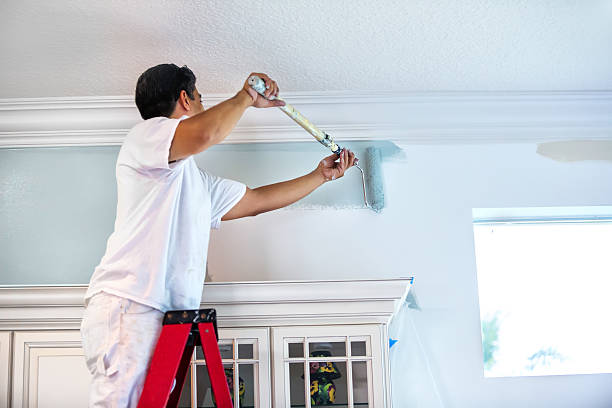Introduction:
Painting the exterior or interior of a commercial building can be a big project, but the key to a successful outcome is preparation. By taking the time to properly prepare your commercial building for a painting project, you can ensure that the job is done efficiently, effectively, and with minimal disruptions to your business. Here are some key steps to take when preparing your building for a commercial painting project.
- Assess the condition of the building: Before you begin any preparation work, it’s important to assess the condition of the building. This includes looking for any cracks, holes, or other damage that needs to be repaired before painting can begin.
- Clean the surfaces: Once the building has been assessed, the next step is to clean the surfaces that will be painted. This includes removing any dirt, grime, or mildew that may be present. This step is crucial to ensure that the paint adheres properly and lasts longer.
- Remove or protect fixtures and furniture: If possible, remove any fixtures or furniture from the areas that will be painted. If this is not possible, be sure to protect them with drop cloths or plastic sheeting to ensure that they are not damaged during the painting process.
- Repair any damage: If any damage was identified during the assessment, be sure to repair it before painting begins. This includes filling any cracks or holes, and sanding down any rough surfaces.
- Sand the surfaces: Once the surfaces have been cleaned and repaired, they should be lightly sanded to ensure that the paint adheres properly. This step is especially important for surfaces that have been previously painted.
- Prime the surfaces: Once the surfaces have been sanded, they should be primed to ensure that the paint adheres properly. This step is especially important for surfaces that have been previously painted.
- Mask off areas that do not need to be painted: To ensure that only the areas that need to be painted are painted, mask off any areas that do not need to be painted. This includes trim, windows, and doors.
- Prepare the area for painting: Once all of the preparation work has been completed, the final step is to prepare the area for painting. This includes covering floors and any other areas that may be affected by paint with drop cloths or plastic sheeting.
Conclusion:
Preparing your commercial building for a painting project is crucial to ensure that the job is done efficiently, effectively, and with minimal disruptions to your business. By taking the time to assess the condition of the building, clean the surfaces, remove or protect fixtures and furniture, repair any damage, sand the surfaces, prime the surfaces, mask off areas that do not need to be painted and prepare the area for painting, you can ensure that the paint adheres properly and lasts longer. It is important to keep in mind that preparation work is a vital part of the painting process, and should not be overlooked or rushed. Hiring professional painting contractor also ensures that all these steps are done properly and efficiently.


